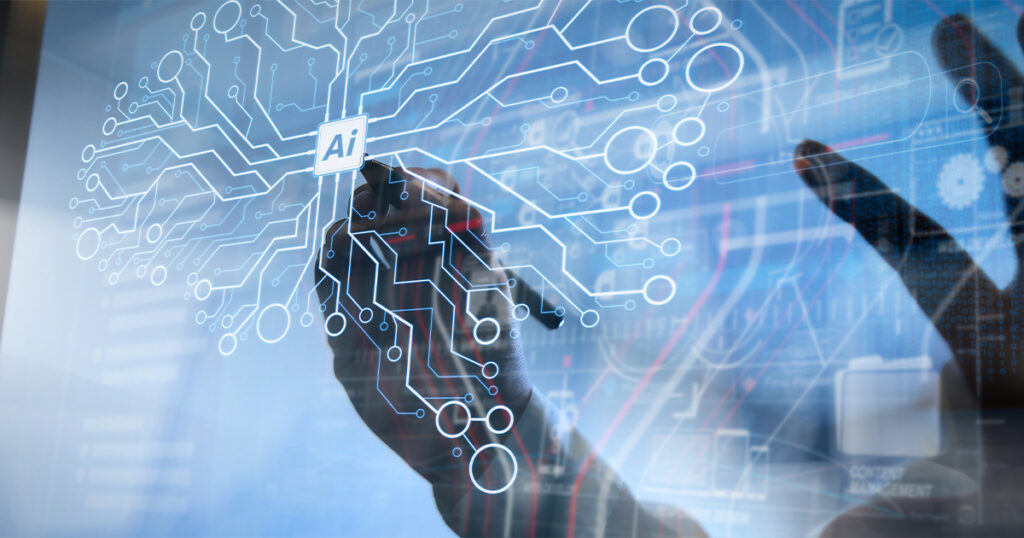HealthTech Innovations: The Role of AI in Medical Diagnostics
The integration of artificial intelligence (AI) in medical diagnostics has transformed the healthcare landscape, driven by the need for faster and more accurate patient assessments. AI in medical diagnostics not only enhances efficiency but also improves outcomes through predictive analytics and data integration, paving the way for a smarter healthcare system.
Understanding AI in Medical Diagnostics
AI in medical diagnostics refers to the utilization of machine learning algorithms and advanced data analytics to interpret medical data and assist healthcare professionals in diagnosing diseases. This innovative approach leverages vast datasets and recognizes patterns, leading to improved accuracy in diagnostics.
Key Technologies in AI Medical Diagnostics
- Deep Learning: A subset of machine learning that mimics the human brain’s neural networks, enabling machines to learn from vast amounts of medical data.
- Natural Language Processing (NLP): Allows computers to understand and interpret human language, facilitating the analysis of unstructured data such as patient notes.
- Image Recognition: Advanced algorithms that analyze medical images to assist in identifying conditions such as tumors, fractures, and other abnormalities.
Benefits of AI in Diagnostics
The deployment of AI in medical diagnostics carries numerous benefits, including:
- Improved Accuracy: AI tools can analyze vast datasets to identify patterns invisible to the human eye, resulting in more accurate diagnoses.
- Efficiency: Automation of routine tasks frees up time for healthcare professionals, allowing them to focus on patient care.
- Predictive Analytics: AI can forecast disease outbreaks and patient trends, enhancing preventive healthcare.
Real-World Applications of AI in Medical Diagnostics
Healthcare organizations worldwide are harnessing the power of AI to improve diagnostic processes. Here are some notable examples:
- Radiology: AI algorithms analyze X-rays and MRIs to detect anomalies, reducing the time required for diagnosis.
- Pathology: AI assists pathologists in examining tissue samples and identifying cancers with higher precision.
- Cardiology: Algorithms evaluate ECG data to predict heart diseases, aiding in early intervention.
Challenges and Concerns
Despite the promising advancements, the integration of AI in medical diagnostics also faces several challenges:
- Data Privacy: Ensuring the security of sensitive patient information is crucial in the digital age.
- Skill Gap: Healthcare professionals require training to effectively interpret AI-generated data and integrate it into their workflows.
- Regulatory Hurdles: The rapidly evolving nature of AI technology poses challenges in establishing comprehensive regulations for safe usage.
The Future of AI in Medical Diagnostics
The future of AI in medical diagnostics is bright, with continued advancements anticipated. Innovations such as personalized medicine, where AI tailors treatments based on individual genetic profiles, are on the horizon. Increased collaboration among tech companies, healthcare professionals, and regulatory bodies will enhance the development and integration of AI tools in diagnostics.
Conclusion
AI in medical diagnostics is a game-changer that holds the potential to revolutionize how healthcare providers diagnose and treat diseases. By improving accuracy, efficiency, and predictive capabilities, AI is paving the path towards a more responsive and effective healthcare system. While challenges exist, the ongoing commitment to research, innovation, and collaboration will ensure successful integration of AI technologies in medical practice.
Revolutionizing Diagnostic Accuracy with AI
One of the most promising facets of AI in medical diagnostics is its capacity to enhance diagnostic accuracy. Traditional methods of diagnosis often rely on the experience and intuition of healthcare professionals, which can lead to variability in outcomes. AI, on the other hand, utilizes vast amounts of data to identify patterns that may elude the human eye. This not only reduces the margin for error but also standardizes diagnoses across different practitioners.
Case Studies in Improved Diagnoses
Recent case studies illustrate the remarkable impact of AI in medical diagnostics. For example, AI algorithms have been developed that can analyze radiological images with a level of accuracy that rivals or surpasses human radiologists. These algorithms process thousands of imaging datasets, learning to identify markers of diseases such as cancers, often in earlier stages than traditional methods would allow. Such advancements pave the way for timely interventions, improving patient outcomes and reducing healthcare costs significantly.
The Integration of AI into Routine Clinical Practice
For AI in medical diagnostics to realize its full potential, it must be seamlessly integrated into routine clinical practice. This requires collaboration between technologists, healthcare professionals, and regulatory bodies to create systems that are user-friendly and compliant with healthcare standards. Through this integration, healthcare providers can leverage AI tools to augment their decision-making process rather than replace it, ensuring that patient care remains at the forefront of innovation.
Training Healthcare Professionals on AI Tools
Another critical aspect is the training of healthcare professionals to effectively use AI-driven tools. Educating practitioners about the capabilities and limitations of AI applications ensures that they are empowered to make informed decisions based on technology-assisted insights. Workshops, online courses, and hands-on training sessions can equip healthcare professionals with the necessary skills to navigate this new landscape, ultimately enabling them to address patient needs more proficiently.
Ethical Considerations and the Future of AI in Diagnostics
As the role of AI in medical diagnostics continues to expand, ethical considerations also come to the forefront. Issues such as data privacy, algorithmic bias, and accountability in AI decision-making require careful attention. Stakeholders must prioritize transparency and fairness in AI applications, ensuring that all patient populations benefit equitably from these innovations. Looking ahead, the future of AI in medical diagnostics appears promising, with the potential to transform not just how diagnoses are made, but the overall approach to patient care.


